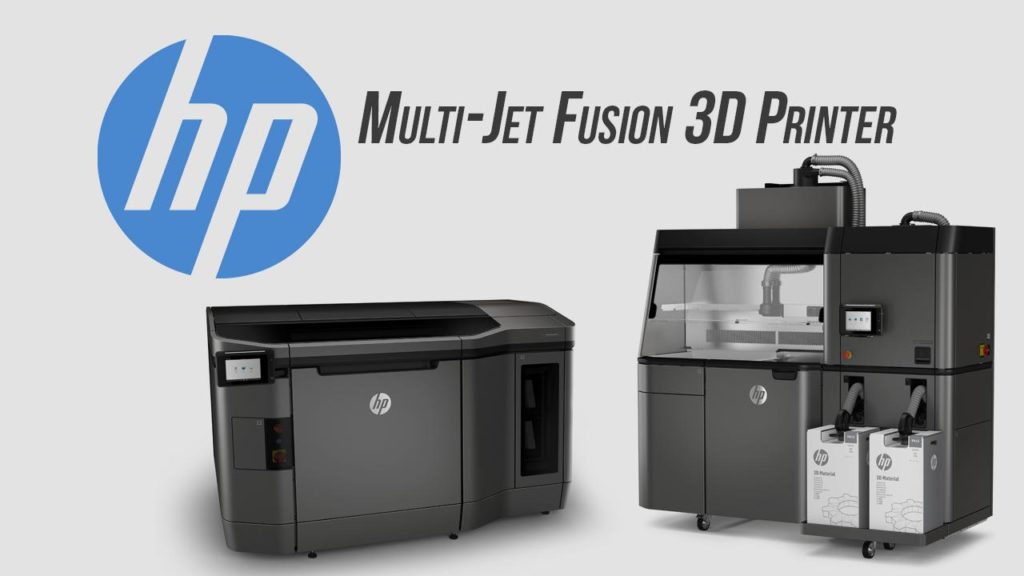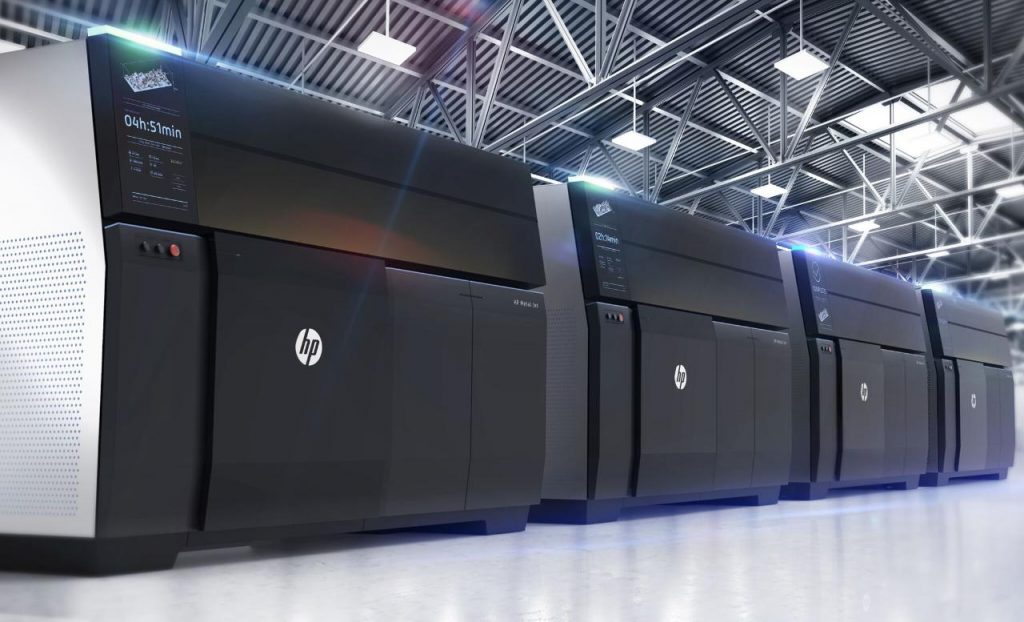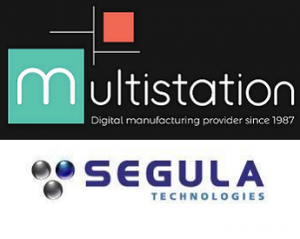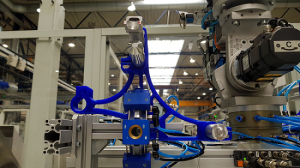As formnext kicks off in Frankfurt, Germany, several companies are already making big announcements. HP is no exception, blazing into formnext with a series of updates regarding its Jet Fusion 3D printing technology.
“HP is accelerating the shift to 3D mass production, enabling an exciting array of applications helping customers improve their businesses as we enter the 4thIndustrial Revolution. Many industries such as automotive, which is going through its biggest transformation in more than 100 years, are looking to new technologies and strategic partners like HP to help them better compete in this time of change,” said Christoph Schell, President of 3D Printing and Digital Manufacturing, HP Inc. “We are working with innovators across the globe to change the way they design and manufacture with HP Multi Jet Fusion and our new Metal Jet platform, unlocking new applications, more manufacturing flexibility, and greater innovation, efficiency and sustainability across their product development lifecycle.”
Part of HP’s news involves the continuing worldwide expansion of its technology with the addition of some new customers. RecTech 3D is based in China and will be using Multi Jet Fusion technology as it expands into a full-fledged industrial Additive Manufacturing Center in Chongqing. Working with HP, the company plans to offer application and design expertise as well as training to customers and partners. In early 2019, RecTech 3D will begin installing 10 HP Jet Fusion 3D 4210 printers in its Additive Manufacturing Center, with plans to grow to 30 machines by the end of the year.
“As a premier partner of HP in China, RecTech 3D is looking to help lead industrial innovators and designers to take advantage of digital production and manufacturing, and we believe HP Multi Jet Fusion technology offers the capabilities required to deliver on that promise,” said Jay Luo, CEO, RecTech 3D. “In addition to offering the production of parts using HP Multi Jet Fusion technology, we will provide our customers with educational resources and end-to-end solutions based on HP’s industry-leading 3D printing products and expertise that enable the entire process from design to production. Using HP Multi Jet Fusion technology we plan to transform manufacturing.”
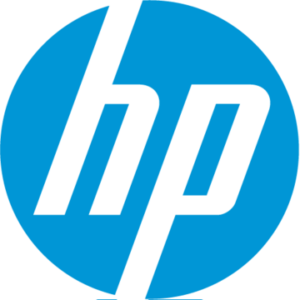 Meanwhile, US-based Forecast 3D is growing steadily with the installation of 24 HP Jet Fusion 3D 4210 in its digital factory. In addition, GE Transportation will use HP’s Jet Fusion solutions in its John F. Welch Technology Center in Bangalore, India to produce industrial parts for applications in mining vehicles and locomotives.
Meanwhile, US-based Forecast 3D is growing steadily with the installation of 24 HP Jet Fusion 3D 4210 in its digital factory. In addition, GE Transportation will use HP’s Jet Fusion solutions in its John F. Welch Technology Center in Bangalore, India to produce industrial parts for applications in mining vehicles and locomotives.
“Our business continues to reap the rewards of leaning in early and going big with HP Multi Jet Fusion technology,” said Corey Weber, CEO, Forecast 3D. “Our 3D Manufacturing Center is now powered by 24 HP Jet Fusion 3D 4210 printers. We are serving more customers than ever, running 24×7, and on pace to surpass millions of Multi Jet Fusion parts produced this year.”
In the automotive industry, BMW Group is using HP Jet Fusion 3D 4200 printers to manufacture the window guide rail for the BMW i8 Roadster, while Volkswagen Group is using HP systems for both metal and plastic. By the end of the year, 100 percent of the tools used to manufacture the new T-Cross SUV will be 3D printed using Multi Jet Fusion technology. In addition, Volkswagen will begin to use HP’s Metal Jet 3D printing technology starting with mass-customizable parts such as key rings and name plates.
“Using our automotive standards and HP’s Multi Jet Fusion technology our manufacturing team is able to produce durable, reliable final parts such as the window guide rail for our BMW i8 Roadster,” said Dr. Dominik Rietzel, Head of Non-Metal Additive Manufacturing at the BMW Group. “In the past decade, we are proud to have produced more than one million 3D printed parts, and it’s fitting that one of these window guide rails was identified as the one-millionth part printed. Complex parts that require reliable functionality and a small footprint are a perfect example of the power of additive manufacturing and together with partners such as HP we are excited about the possibilities ahead.”
HP recently introduced the new PA-11 material, which has seen a great deal of use already. Its properties include strength, ductility, impact resistance and enhanced elongation break. Bowman International used the material to produce a rollertrain cage, while orthotic company OT4 used it to create a sleep helmet. Other parts produced with PA-11 include shoe heels by New Rock and personalized phone cases by Freshfiber.
HP’s Jet Fusion 3D 300/500 series is a lower-cost version of its MJF technology, and early customers include A-Dec, a dental equipment manufacturer using the technology to produce fixtures, jigs and low-volume service parts; Rady Children’s Hospital, which is using it to create casts, corrective devices, and anatomical models; and the University of Louisville, which is using the technology in numerous applications across several departments.
HP is now offering new online resources for partners and customers who are looking to accelerate their adoption of 3D printing for mass production. These include the i-AMdigital Talent Platform, a digital career growth platform for additive manufacturing, and 3D ExchangeNet, a marketplace dedicated to helping 3D printing businesses identify growth capital, investment or buyout opportunities.
At formnext, HP will be showcasing its recently introduced Metal Jet technology, which, according to the company, can offer up to 50 times more productivity at lower cost than competitors. Companies using the technology already include Volkswagen, GKN Powder Metallurgy, Parmatech, Wilo, Primo Medical Group and OKAY Industries. In the first half of 2019, customers will be able to order Metal Jet parts through the new Metal Jet Production Service.
Formnext is taking place from today until November 16th. You can visit HP at Booth E40 in Hall 3.1.
Discuss this and other 3D printing topics at 3DPrintBoard.com or share your thoughts below.

